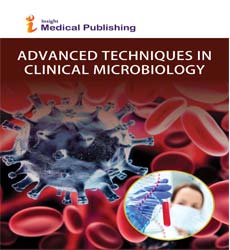Infectious Diseases: Symptoms, Causes and Diagnosis
Introduction
Infectious diseases may be caused by several pathogens, as well as bacterium, viruses, fungi, and parasites that will cause health problem and sickness. For humans, transmission of pathogens might occur during a form of ways: unfold from person-toperson by direct contact, water or foodborne health problem or aerosolization of infected particles within the surroundings and thru insects (mosquitoes) and ticks.
Symptoms of infectious diseases
For instance, symptoms of respiratory disease include:
1. Fever
2. Chills
3. Congestion
4. Fatigue
5. Muscle aches and headache
Other infectious diseases, like enterobacteria, cause additional serious symptoms, including:
1. Bloody looseness of the bowels
2. Vomiting
3. Fever
4. Dehydration (lack of fluid)
5. Shock Infectious diseases will cause many various symptoms.
Some area unit thus gentle that you simply might not even notice any symptoms, whereas others may be grievous. There are treatments for a few infectious diseases, except for others, like some viruses, you'll be able to solely treat your symptoms. You will be able to take steps to forestall several infectious diseases [1,2]
1. Get unsusceptible
2. Wash your hands typically
3. Pay attention to food safety
4. Avoid contact with wild animals
5. Practice sex activity 6. Don't share things like toothbrushes, combs, and straws.
Causes
There are many various ways in which you'll be able to get associate degree infectious disease:
1. Through direct contact with an individual UN agency is sick. This includes foreplay, touching, sneezing, coughing, and sexual contact. Pregnant mothers may also pass some germs on to their babies.
2. Through indirect contact, once you bit one thing that has germs thereon. For instance, you'll get germs if somebody UN agency is sick touched a door handle, then you bit it.
3. Through insect or animal bites
4. Through contaminated food, water, soil, or plants There are four main varieties of germs:
Bacteria: A cellular germs that multiply quickly. They will offer off toxins, those area unit harmful chemicals which will cause you to sick. Streptococcal sore throat and tract infections area unit common microorganism infections.
Viruses: Small capsules that contain genetic material. They invade your cells in order that they'll multiply. This may kill, damage, or modification the cells and cause you to sick. Infectious agent infections embrace HIV/AIDS and therefore the cold.
Fungi: Primitive plant-like organisms like mushrooms, mild, mildew, and yeasts. Tinea could be a common zymosis.
Parasites: Animals or plants that survive by living on or in different living things. Protozoa infection is associate degree infection caused by a parasite.
Infectious diseases unfold in multiple ways in which. In several cases, direct contact with a sick individual, either by skin-toskin contact (including sexual contact) or by touching one thing another person touches, transmits the sickness into a replacement host [3]. Contact with body fluids, like blood and spit, conjointly spreads infectious diseases. Some diseases unfold through droplets discharged from a sick person’s body after they cough or sneeze. These droplets linger within the air for a brief amount of your time, landing on a healthy person’s skin or inhaled into their lungs. In some cases, infectious diseases travel through the air for long periods of your time in little particles. Healthy folks inhale these particles and later become sick. Solely sure diseases unfold with transmission mechanism, as well as T.B. and therefore the measles virus [4].
Diagnosis
Doctors diagnose infectious diseases employing a form of laboratory tests. Samples of blood, urine, stool, secretion or different body fluids area unit examined and supply info employed in the diagnostic method. In some cases, doctors determine infectious organisms by examining them underneath a magnifier. Sometimes, laboratories should grow, or culture, the infectious organism from a sample to substantiate its presence [5].
References
1 Laga AC (2020) Update in Infectious Disease Diagnosis in Anatomic Pathology. Clin Lab Med 40:565-585.
2 Cunningham AA, Daszak P, Wood JLN (2017) One Health, emerging infectious diseases and wildlife: two decades of progress? Philos Trans R Soc Lond B Biol Sci 19:20160167.
3 Shanthikumar SR (2018) Infectious disease communications. Vet Rec 182:145.
4 Lappin MR (2009) Infectious disease diagnostic assays. Top Companion Anim Med 24:199-208.
5 Veir JK, Lappin MR (2010) Molecular diagnostic assays for infectious diseases in cats. Vet Clin North Am Small Anim Pract 40:1189-200.
Abstract
Divija Battula*
Department of Microbiology, Andhra University, Andhra Pradesh, India
*Corresponding author:
Nivetha D
Department of Microbiology, Andhra University, Andhra Pradesh, India
Email:divija1589@gmail.com
Received: August 11, 2021, Accepted: August 25, 2021, Published: August 31, 2021
Citation: Battula D (2021) Infectious Diseases: Symptoms, Causes and Diagnosis. Adv Tech Clin Microbiol. Vol.3 No.1:102
Open Access Journals
- Aquaculture & Veterinary Science
- Chemistry & Chemical Sciences
- Clinical Sciences
- Engineering
- General Science
- Genetics & Molecular Biology
- Health Care & Nursing
- Immunology & Microbiology
- Materials Science
- Mathematics & Physics
- Medical Sciences
- Neurology & Psychiatry
- Oncology & Cancer Science
- Pharmaceutical Sciences
